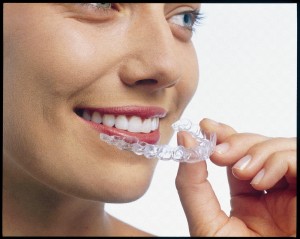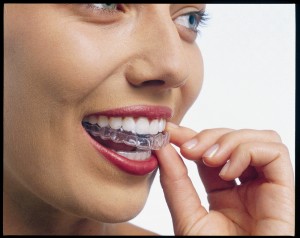By Moonlake Lee

I am a regular reader of Sumiko Tan’s columns in the Straits Times – she is a good writer and always has an interesting perspective on issues of daily life.
Sumiko’s recent May 2, 2010 article in the Straits Times on her experience with Invisalign certainly grabbed my attention (and I am sure, the attention of many Invisalign patients and dentists/orthodontists). Titled “In Dental Prison”, she recounted her negative experience wearing the Invisalign aligners for her upper teeth and her trepidation on wearing braces for her lower teeth.
Readers may have come to the general conclusion after reading the article that braces and Invisalign are uncomfortable and restrictive and that one has to decide whether the cost of being subject to such treatments is justified, particularly if it is for aesthetic reasons alone. Having recently completed Invisalign treatment myself (and having worn braces many years ago), I wanted to suggest a few pointers for those considering Invisalign or braces treatment
- Knowing what to expect ahead of time would be helpful in psychologically and practically preparing oneself for the procedure. Any treatment where teeth (and bones) are being moved will inevitably result in some level of discomfort but having an idea of what is involved will usually smoothen the transition.
- Having a positive frame of mind and a good understanding of the treatment also goes a long way in reducing anxiety. The experience of the Invisalign patients (myself included) at Specialist Dental Group has largely been nothing less than good – in fact, many eagerly awaited the appointment with the orthodontist to have the Invisalign aligners issued for the first time. I certainly couldn’t wait to start my treatment.
From a personal perspective, I actually found that wearing Invisalign was rather liberating. There were no restrictions on the types of food or drinks consumed as long as one removed the aligners prior to eating. I could still enjoy coffee/tea (just let it cool down first) and also soft drinks – I just had to make sure to rinse later.



Putting on and taking off the aligners was something that became routine. Just discretely use your hand to shield your mouth when you remove the aligner… or get an “Outie” tool to help make removing the aligner easier.
- Ideally, one should brush one’s teeth after eating and before putting the aligners on again. I was really good about it for the first couple of months… and then I confess, I became a little less diligent and just rinsed well after meals… that was OK too. I guess I was lucky.
- Any sharpness in the edges of the aligner can easily be corrected at the dentist’s office. I had no issues with this for my aligners.
- In terms of payment of fees, when it comes to Invisalign, check with your clinic on their payment policy. Our clinic generally collects a deposit when treatment is confirmed, and subsequently, patients can pay in installments at each review appointment. Some clinics may also have arrangements with credit card companies where the treatment fees may be spread out over a longer period of time.
Apart from the cosmetic reasons to have one’s teeth straightened, there are also functional reasons why orthodontic treatment may be necessary, and not just for vanity’s sake. Crooked teeth are often difficult to clean and maintain. They are susceptible to dental decay and gum disease. This can make treatment extensive and costly if delayed until much later. Speech can also be affected in some instances where the teeth are poorly aligned, or when the upper and lower jaws are not in correct alignment with each other.
Finally, if one is considering braces or Invisalign treatment,
- take time to read about what is involved. There are many websites with useful information on these procedures. You can read about these at the Specialist Dental Group website but also on the manufacturers’ websites, (e.g. Invisalign and GAC) and the websites of dental associations, (e.g. Singapore Dental Health Foundation and the American Dental Association)
- Speak with others who have gone through the experience and obtain practical tips from them.
- General dentists and specialist orthodontists have different training and experience. Find one that you are comfortable with who is able to discuss the various treatment options for you.
- Some patients may be told that they need to have extractions in order for optimal results. While no one would like to lose teeth that are otherwise healthy, do consider your dentist’s/orthodontist’s expert advice carefully – he or she is experienced in doing many of these procedures and your teeth may need to have the extra space in order to be aligned properly.
Know yourself and your habits – if you lack discipline to faithfully wear the Invisalign aligners, you may want to consider having fixed braces instead.





